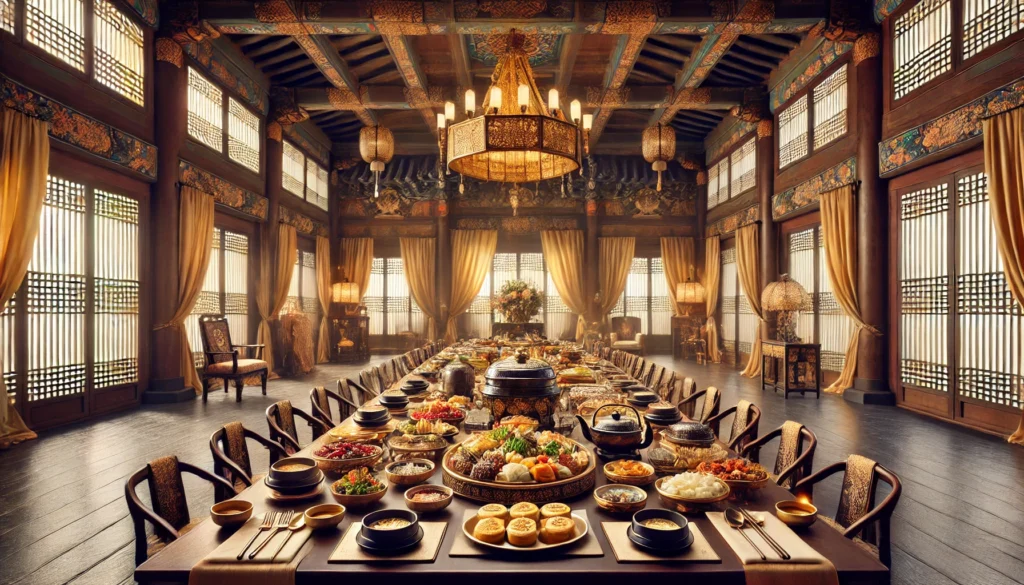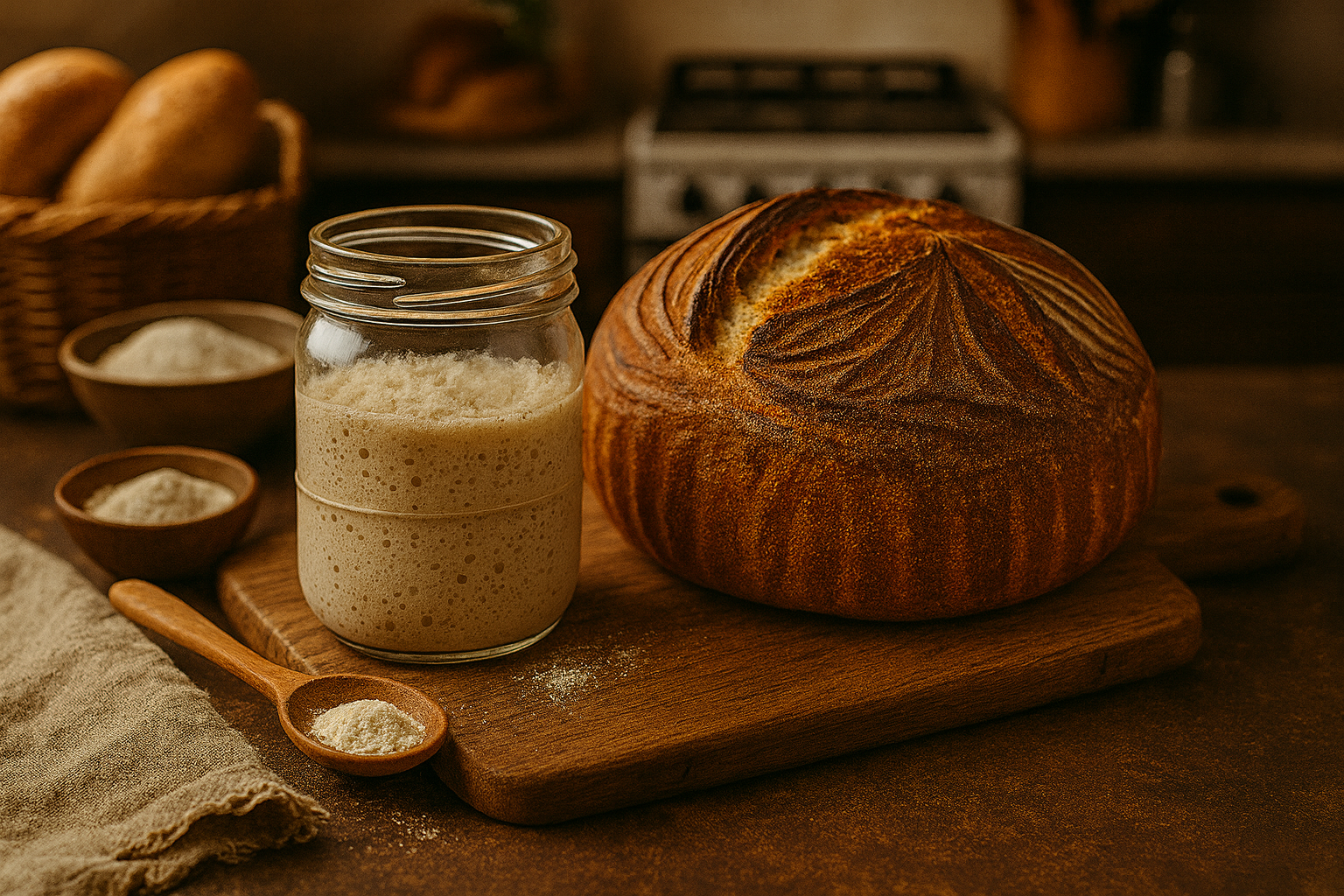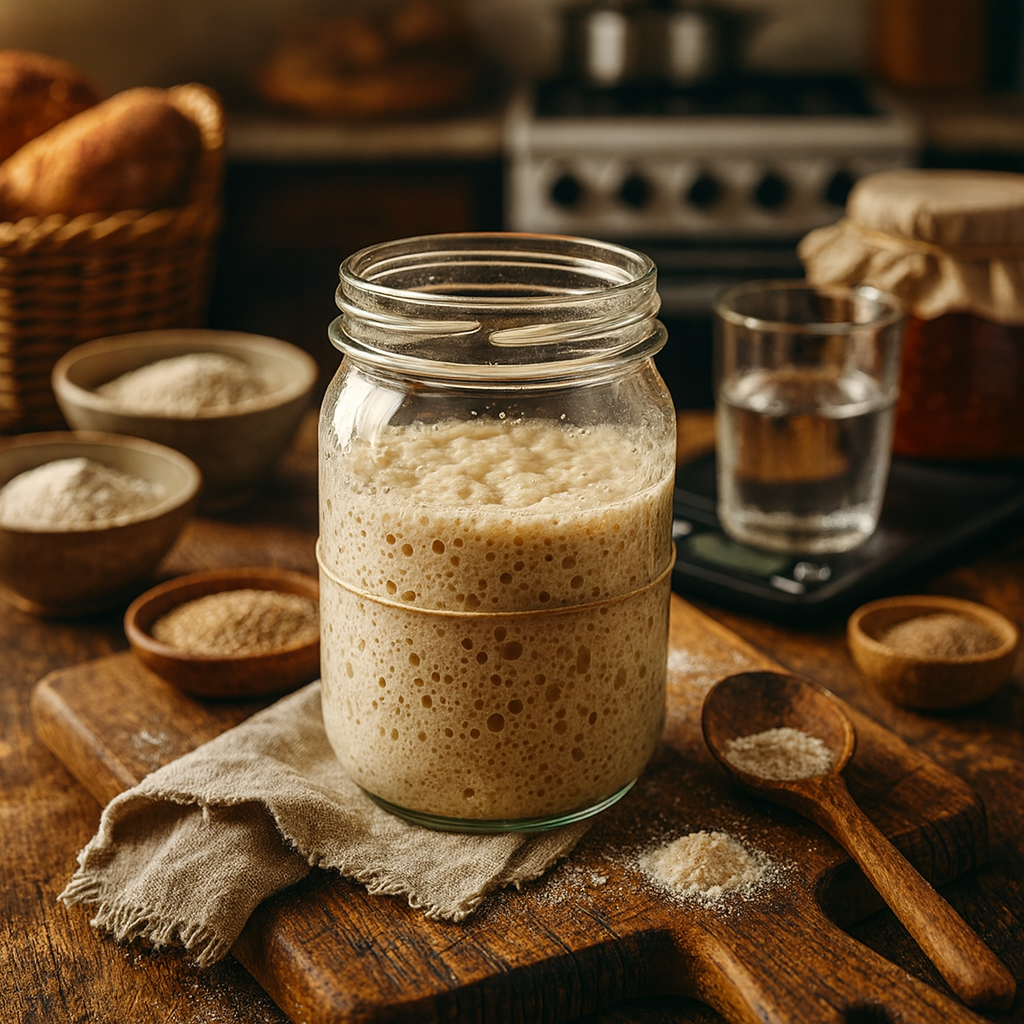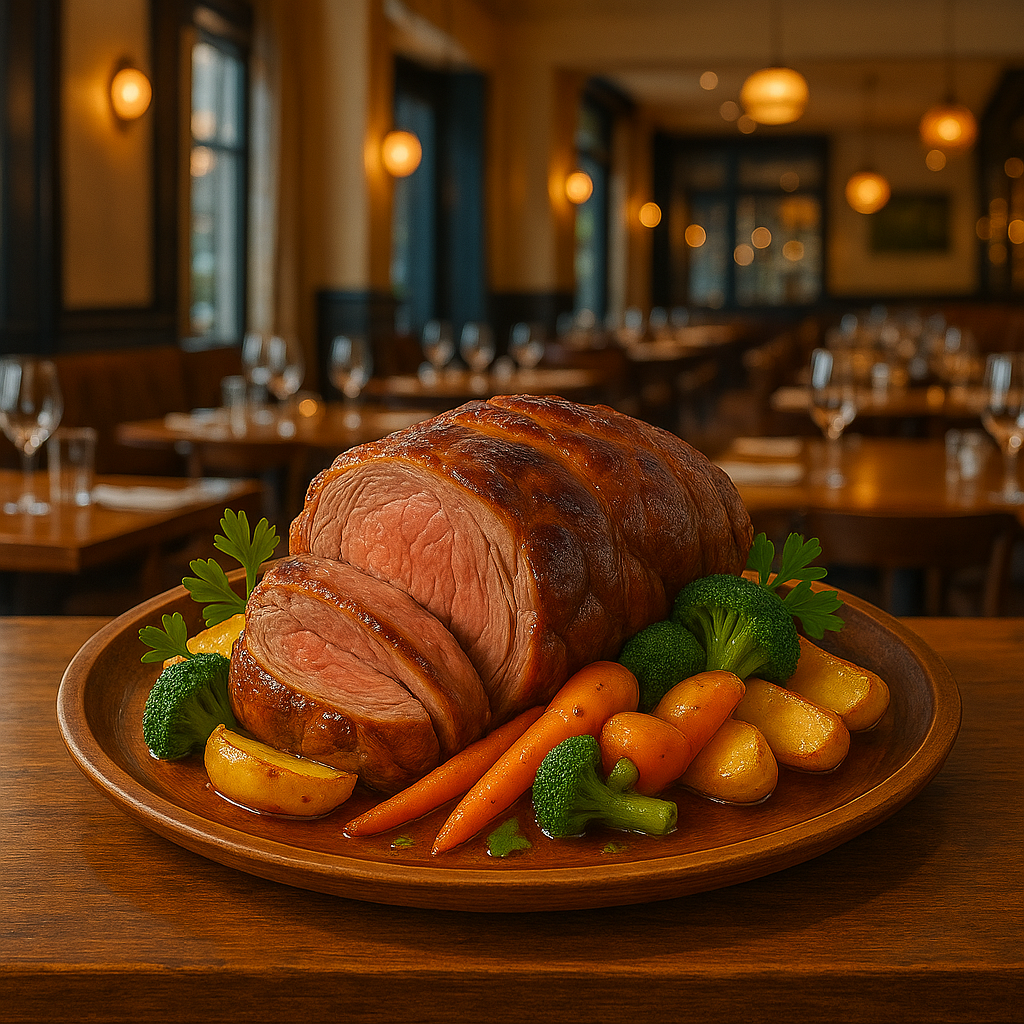Table of Contents
Introduction to Korean Royal Cuisine
Korean royal cuisine, known as “Gungjung Eumsik,” represents a significant aspect of the nation’s culinary landscape, steeped in rich history and cultural heritage. This elaborate style of cuisine emerged during the Joseon Dynasty (1392-1910), where meals were meticulously prepared for the royals—kings and queens—highlighting not only the food but a strict adherence to protocol and artistic presentation. The roots of Korean royal cuisine are deeply intertwined with Confucian ideals, which emphasize respect, hierarchy, and harmony within society, captivating not only the palate but also the eyes of its esteemed guests.
The preparation of these royal meals involved a detailed selection process of ingredients. Cooks were required to use only the freshest, highest-quality components, often sourced from various regions of Korea. Ingredients such as ginseng, dried fish, and meticulously prepared vegetables were staples, often enhanced with delicate sauces that brought depth of flavor to each dish. The principle of “yin and yang” was central to the harmony of flavors, colors, and textures on the table, further exemplifying the cultural significance of balance in Korean tradition.

Another vital aspect of Korean royal cuisine is its artistic presentation. Each dish was a work of art, crafted not only for taste but also for visual appeal, reflecting the dignity and status of the royal court. The intricate plating and careful selection of colors symbolized the royal family’s power and prestige. Moreover, the philosophy behind these meals transcended mere sustenance; royal cuisine embodied Korea’s traditional values and spiritual beliefs, serving as an expression of national identity. As such, Korean royal cuisine is not just about food—it’s an embodiment of history, culture, and tradition to be appreciated and preserved for generations to come.
Historical Background of Royal Cuisine
Korean royal cuisine has a rich and intricate history that reflects the societal structures and cultural values of its time. The origins of this distinctive culinary tradition can be traced back to the Three Kingdoms period (57 BC – 668 AD), where the three kingdoms of Goguryeo, Silla, and Baekje began to develop unique food customs. During this era, meals were often influenced by practicality and the availability of local ingredients, which laid the groundwork for elaborate culinary practices later seen in the royal courts.
As Korea transitioned into the Unified Silla period and subsequently the Goryeo Dynasty (918 – 1392), food preparation became more sophisticated. This evolution was significantly shaped by the integration of Buddhist principles, which promoted vegetarianism and influenced the types of dishes served. However, it was during the Joseon Dynasty (1392 – 1897) that Korean royal cuisine becomes truly distinctive, marked by an emphasis on Confucian values. This period established a rigid social hierarchy that dictated not only who consumed certain foods but also how meals were prepared and presented.
In the royal court, the preparation of meals became a highly ceremonial process, with specialized kitchens staffed by skilled chefs. These chefs adhered to strict guidelines regarding food aesthetics, flavor, and nutritional balance, reflecting the Confucian principle of harmony between health and pleasure. The introduction of seasonal ingredients and meticulous attention to presentation characterized royal dishes, elevating food to an art form. Additionally, significant historical events, such as invasions and famines, influenced the availability of ingredients and prepared innovative dishes that adapted to changing circumstances.
Through centuries of development, Korean royal cuisine has evolved while retaining its core principles. Today, it stands as a testament to Korea’s rich cultural history, offering insights into the nation’s identity and values. Understanding the historical context of royal cuisine provides a deeper appreciation for this culinary heritage.
Essential Ingredients in Royal Dishes
Korean royal cuisine is distinguished by a rich amalgamation of ingredients that not only elevate the flavor of each dish but also embody the cultural significance of the royal court. Variants of meats, an array of vegetables, and carefully curated seasonings form the backbone of these opulent meals. Historically, various meats such as beef, chicken, and fish were commonly utilized, often sourced from regions that provided the highest quality. For instance, Hanwoo beef, renowned for its tenderness and flavor, reflects the high standards set by the royal kitchens.
Vegetables also played a pivotal role in royal dining, particularly during Chuseok and Seollal, where seasonal produce was highlighted. Ingredients like lotus root, perilla leaves, and mung beans not only contributed vibrant colors and textures but were also believed to possess health benefits. In royal cuisine, the significance of utilizing fresh, seasonal ingredients cannot be overstated, as it was thought to symbolize abundance and connection to nature. During the changing seasons, the royal chefs would adapt their menus to reflect the ingredients available, thus honoring the cyclical rhythms of agriculture.
The seasonings used in royal dishes are equally integral, with soy sauce, sesame oil, and gochugaru (red pepper flakes) being essential components. Soy sauce, in particular, has a long history in Korean culture, originating from ancient methods of fermenting soybeans, which showcases the depth of flavor that these ingredients can provide. Moreover, the careful balance of seasoning not only enhances the dishes but also signifies the skill of the chef in the royal court. The precise preparation methods, along with the meticulous selection of ingredients, ultimately celebrate the artistry and tradition of Korean royal cuisine.
Signature Dishes to Try
Korean royal cuisine, or ‘gungjung-eumshik,’ is distinguished by its meticulous preparation, elaborate presentation, and diverse flavors. One of the most representative dishes of this noble culinary tradition is ‘hanjeongsik,’ often referred to as a royal banquet. This elaborate meal consists of multiple courses, showcasing a variety of seasonal ingredients treated with finesse. Diners can expect to enjoy a range of delicacies, from grilled fish to intricate side dishes, each thoughtfully arranged on traditional ceramics, adding a visual appeal to the experience. The harmony of flavors in ‘hanjeongsik’ reflects the concepts of balance and moderation emphasized in Korean culture.
Another signature dish worth exploring is ‘galbi-jjim,’ a sumptuous braised short rib dish. This comfort food is prepared through slow cooking, allowing the marinated ribs to absorb a blend of fragrant spices and savory sauces. Typically sweetened with ingredients like soy sauce, sugar, and local fruits, ‘galbi-jjim’ delights taste buds with its tender texture and rich flavors. The presentation often features carrots, chestnuts, and other vegetables, making it not only delicious but also visually appealing. Enjoying this dish provides a glimpse into the lavish feasts of Korean royalty.
‘Jeongol,’ a type of Korean stew, is another essential culinary masterpiece. This dish is characterized by its vibrant presentation and variety of ingredients, including meats, seafood, and seasonal vegetables, all simmered together in a spicy or savory broth. Skillfully crafted to maximize flavor and texture, ‘jeongol’ is often served in a communal pot, symbolizing unity and celebration among diners. Various regional variations exist, allowing guests to experience unique interpretations based on local ingredients and traditions. Sampling these signature dishes offers an appreciation for the richness and complexity of Korean royal cuisine, inviting culinary exploration.
Dining Etiquette in the Royal Court
Korean royal cuisine is not only notable for its flavors but also for the intricate dining etiquette upheld in the royal court. This etiquette reflects the deep reverence for food as both a spiritual and cultural symbol. The arrangement of dishes, for instance, follows specific principles that signify harmony and balance in the meal. Typically, a royal dining table would feature a variety of side dishes, known as banchan, artfully arranged to represent the natural elements, highlighting the relationship between man and nature.
Utensils play a significant role in royal dining as well. Traditionally, metal utensils, particularly chopsticks and spoons, were used, emphasizing the importance of cleanliness and purity in royal meals. In the royal court, the proper use of these utensils is treated with high regard; for instance, chopsticks were often not to touch the bowl of rice directly—a practice symbolizing respect for the food and the labor behind it. Serving and receiving food required particular manners, with the act of passing bowls and dishes undertaken with careful consideration to avoid signaling disrespect.
Moreover, every course in a royal meal comes with its own set of rituals and timing that enhance the overall experience. It is customary to wait for the highest-ranking member to begin the meal, underlining the values of hierarchy and respect within the confine of royal social structures. This etiquette goes beyond mere tradition; it is a manifestation of the Confucian ideals that dominate Korean cultural practices, where harmony and respect are paramount.
As we witness the transformation of these time-honored customs in contemporary dining, elements such as presentation and precise usage of utensils echo the royal traditions, creating a dining experience that intertwines respect for history with modern sensibilities.
Modern Adaptations of Royal Cuisine
Korean royal cuisine, characterized by its intricate flavors and elaborate presentation, has undergone significant adaptations in response to contemporary dining trends. As modern chefs strive to preserve traditional techniques while catering to the evolving palates of diners, they have crafted innovative interpretations of age-old recipes. This evolution not only sustains the culinary heritage of Korea but also invites a new generation to explore the rich flavors of royal cuisine.
Many establishments now serve modern takes on royal dishes, reimagining them with seasonal ingredients and contemporary cooking methods. For instance, dishes such as baekban—a traditional Korean meal consisting of rice, side dishes, and soup—are often presented in a more minimalist style, appealing to aesthetic desires in today’s dining culture. Additionally, chefs are incorporating global influences, infusing flavors from international cuisines while maintaining the essence of royal cuisine.
Restaurants such as Jinjujip in Seoul and Gaon offer curated menus that pay homage to traditional recipes through a modern lens. At these establishments, diners can experience dishes like bibimbap made with organic, locally sourced vegetables and aged meats, adding a contemporary flair to a classic staple. Creative figures in the culinary world adapt serving styles and presentations to heighten the dining experience, often turning meals into a form of art.
Moreover, these adaptations allow chefs to narrate the story of Korean royal cuisine to guests, fostering an environment of appreciation for the past. The blend of historical significance and novel execution serves to engage modern audiences while preserving cultural heritage. As royal cuisine continues to evolve, it remains a testament to the enduring legacy of Korean culinary arts, bridging the gap between tradition and the contemporary world.
Where to Find Authentic Royal Cuisine
Exploring authentic Korean royal cuisine is an enriching experience that extends beyond merely tasting delectable dishes; it is an opportunity to immerse oneself in Korea’s rich cultural heritage. One recommended establishment is Jihwaja, located in Seoul. This restaurant specializes in traditional royal banquet dishes, including baekjaeong (steamed rice cakes) and sukiyaki (stew). Visitors can expect a refined atmosphere that reflects the historical origins of the food served.
Another noteworthy destination is Gaon, also situated in Seoul. This Michelin-starred restaurant focuses on reinterpreting royal cuisine while maintaining authenticity. Their menu features seasonal dishes crafted with high-quality ingredients, including jeongol (hot pot) and assorted banchan (side dishes). Gaon offers a meticulously curated dining experience that showcases the essence of royal culinary traditions.
For a unique experience, consider participating in a cooking class at Kimchi Academy House. Located in the heart of Seoul, this venue offers hands-on classes focusing on various aspects of Korean royal cuisine, including the preparation of traditional dishes like bibimbap and bulgogi. The classes not only provide culinary instruction but also insights into the historical context of these dishes, combining education with an interactive experience.
Those interested in a more immersive cultural experience can visit Gyeongbokgung Palace where seasonal events often feature traditional performances accompanied by royal cuisine tastings. Many local eateries surrounding the palace, such as Chosun Onggiosikdang, offer authentic dishes inspired by the royal court, thus enhancing the experience of dining in a culturally significant setting. Each of these establishments and experiences not only serves food but also connects guests to Korea’s regal past through its rich culinary traditions.
The Cultural Impact of Royal Cuisine
Korean royal cuisine serves as more than just a culinary experience; it represents a significant aspect of Korean identity and national pride. Historically rooted in the royal courts, these dishes offer a glimpse into the nation’s heritage and the sophistication of its culinary techniques. Each dish, meticulously crafted with seasonal ingredients, reflects the values and ideals of the time, thus bridging the past and present in both culture and gastronomy. The appreciation for flavors and presentation in royal cuisine has reinforced a broader cultural narrative that continues to influence modern Korean dining practices.
Efforts to preserve and celebrate Korean royal culinary traditions have gained momentum in recent years. Various cultural festivals across the nation now feature royal dishes, allowing locals and visitors alike to engage with this unique aspect of Korean identity. These events often include cooking demonstrations, tastings, and storytelling, all aimed at educating attendees about the historical significance of these dishes. Through such initiatives, there is a concerted effort to foster a deeper understanding of the culinary arts as an essential component of Korea’s cultural legacy.
Moreover, Korean royal cuisine has also garnered international recognition, particularly noteworthy is its inclusion on UNESCO’s list of intangible cultural heritage. This recognition not only elevates the status of these traditional dishes but also emphasizes the need for their preservation in an increasingly globalized world. As modern chefs and culinary historians continue to explore and reinterpret these ancient recipes, the cultural impact of royal cuisine remains ever-present, intertwining contemporary culinary trends with deep-rooted traditions. In conclusion, the embrace of royal cuisine reflects both a reverence for history and a commitment to sustaining Korea’s cultural identity for future generations.
Conclusion: The Legacy of Korean Royal Cuisine
The rich tapestry of Korean royal cuisine not only serves as a testament to the nation’s cultural heritage but also stands as a significant marker of its identity. This culinary tradition, characterized by its meticulous preparation, exquisite presentation, and the use of seasonal ingredients, encapsulates centuries of history and the evolution of Korean society. As global interest in diverse culinary experiences increases, preserving these traditional dishes has become all the more essential. By continually honoring this gastronomic heritage, we not only celebrate our history but also ensure that the art of Korean royal cuisine thrives for future generations.
Exploring the flavors and techniques found in royal meals offers both locals and tourists the unparalleled opportunity to connect with the heart of Korean culture. Whether it is the rich taste of a meticulously crafted galbi or the delicate nuances of a well-prepared jeon, each dish carries stories and traditions that transcend time. This is especially significant today, as culinary practices worldwide become homogenized in an ever-globalizing market. Engaging with Korean royal cuisine allows individuals to appreciate the unique agricultural, social, and historical contexts that have shaped these dishes.
In light of this, we encourage readers to actively seek out authentic experiences by visiting traditional restaurants or attending cultural festivals that showcase Korean royal cuisine. These avenues not only promote the preservation of our culinary legacy but also provide a platform to share this exquisite art form with a wider audience. Recent efforts to maintain and celebrate these practices reflect our understanding of their importance, ensuring that the flavors of history remain alive and accessible. Thus, the legacy of Korean royal cuisine continues to invoke both pride and joy in every bite, reinforcing the enduring significance of our shared culinary heritage.






